Is Kids Clothing Business Profitable? Pros and Cons When Start Bussiness
Whether you’re planning to open your own store or just interested in the financial side of this promising industry, you’ve come to the right spot. In this article, we will explore the typical annual earnings, profitability, expenses, and strategies for boosting profit margins for future store owners. So, let’s get started!
1. Is Kids Clothing Business Profitable?
Starting a kidswear business can be a profitable venture, as the children’s clothing market is a thriving industry. Parents are constantly in search of stylish and affordable clothing options for their children, making it a lucrative market to tap into. Additionally, children quickly outgrow their clothes, creating a constant demand for new clothing items.
According to a report by Statista,The global children’s apparel market is indeed experiencing significant growth. According to a report by Statista, the revenue in the Children’s Apparel segment amounts to US$267.50 billion in 2023.
The market is expected to grow annually by 2.46% (CAGR 2023-2027), resulting in a market volume of US$294.80 billion in 2027. This indeed indicates a substantial growth opportunity for entrepreneurs in the kidswear industry.

2. What Is The Average Annual Revenue Of A Kid’s Clothing Store In The US?
When running a children’s clothing store in the United States, understanding average annual sales can give you an idea of the financial health of the industry. Revenue may vary depending on factors such as store location, size, sales and marketing strategy. It is important to have a common understanding of what to expect.
On average, a children’s clothing store in the US typically earns annual revenue of $250,000 to $1 million or more. This range is influenced by various factors such as the store’s location, target market, product offerings and customer base. Stores located in densely populated areas or popular shopping locations tend to have higher revenue potential due to foot traffic and are more likely to attract customer attention and thus customer demand increase.
There are even many brands that even earn half a billion dollars a year in revenue, such as:
- The Children’s Place is a popular children’s clothing retailer in the US. It offers a wide range of clothing for infants, toddlers, and older children. The company has reported annual revenues exceeding half a billion USD.
- Carter’s is another well-known children’s clothing brand in the US. It specializes in baby and toddler clothing, including onesies, pajamas, and accessories. Carter’s has a strong presence in both physical stores and online retail, contributing to its revenue of over half a billion USD.
- OshKosh B’gosh is a children’s clothing brand that focuses on casual and playwear for kids. It is known for its durable and comfortable clothing, particularly denim products. OshKosh B’gosh has achieved annual revenues surpassing half a billion USD.
3. How Much Profit Can You Make By Selling Children’s Clothes?
Ensuring profits is essential for any business to survive in this fierce market, including children’s clothing stores. While actual profits may vary due to factors such as location, competition and costs, we can provide a general understanding of their typical earnings.
On average, children’s clothing store owners can expect a profit margin of around 5-10% of their annual sales. It’s important to remember that this range can vary based on different factors. Some stores can achieve higher profit margins by effectively managing costs, implementing successful sales and marketing strategies, and building strong customer relationships.
So, assuming your annual revenue is $500,000, you can expect a profit of around $25,000 – $50,000 a year, and if you can reduce costs and have the right business strategy, the number can be higher.
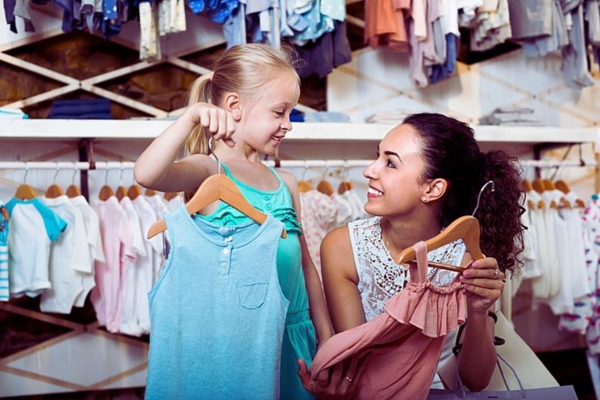
4. What Are The Expenses You Need To Pay?
When managing a children’s clothing store, costs are something you must pay attention to and if you don’t do well in this area, you will not be able to make a profit, or even close the store just a few months after the store opening.
On average, store owners spend about 60-70% of their revenue on costs related to your store’s business operations. Here are some crucial expenses that contribute to this percentage:
- Rent and utilities: These costs include the cost of renting the physical space for your store and related utility bills such as electricity, water and heating. And this can be the most expensive expense, accounting for about 40% of the total cost if you choose a store in a crowded central area with many passersby.
- Inventory cost: This refers to the costs involved in purchasing an initial quantity of children’s clothing items to fill your store with a little extra for stock inventory. And this cost accounts for about 25 – 30% of the total cost. One good way to save the cost is to import wholesale items for reliable manufacturers. They can give you really good quality and factory prices. Accordingly, Vietnam is famous for manufacturing and supplying premium kid clothing with prestigious brands like K-Embroidery, Babeeni, Lotus Smock, Viet Embroidery and so on.
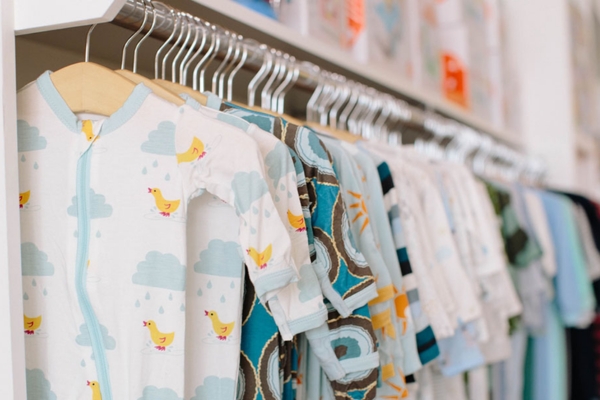
And the remaining 30 – 35% will be divided among other costs as follows:
- Employee salaries: This cost includes the salaries or wages of employees you hire to help run the store, including sales associates, cashiers, and possibly store managers.
- Marketing and advertising: These costs are incurred to promote your children’s clothing store and attract customers. It includes advertising campaigns, online marketing efforts, social media advertising, and any other marketing strategies you use.
- Store upkeep and maintenance: This includes the costs of maintaining a clean and visually appealing store, including cleaning services, repairs, visual merchandising, and store décor.
- Technology and Point-of-Sale systems: These costs relate to the technological infrastructure needed for your store, including computer systems, software, and reliable point-of-sale systems to process Manage sales transactions.
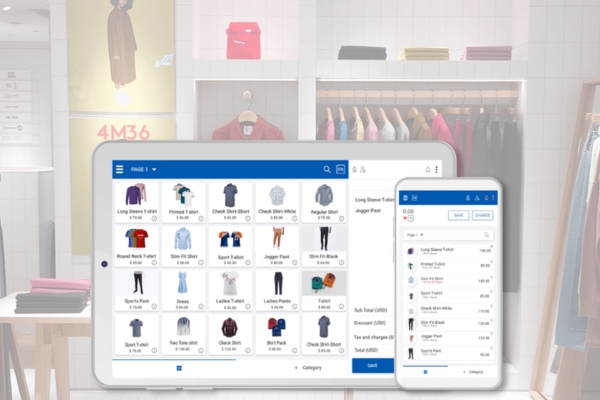
- Other Expenses: This category includes various additional expenses that may be incurred when running a children’s clothing store, such as insurance, licenses and permits, professional services (accounting) , legal), packaging materials and unforeseen costs.
Surprisingly, 97% of children’s clothing in the United States is produced and imported from abroad (From the New York Post). While some may approach importing wholesale children’s clothes overseas with caution, over time it has been proven that it does not affect product quality and offers a more viable solution in this competitive industry.
Importing goods from countries like Vietnam, China, and India gives you an advantage in terms of labor costs, leading to low product prices, thereby helping you optimize your import costs.
5. Why Start a Kidswear Business?
- Expanding Market: The children’s clothing sector continues to grow, fueled by population increases, rising disposable income, and evolving fashion trends. This growth opens up significant opportunities for entrepreneurs to build successful kidswear brands.
- Low Start-Up Costs: Compared to other industries, launching a kidswear business doesn’t require huge capital. With a clear business plan and creativity, you can get started without major financial risk.
- Frequent Repeat Purchases: Kids quickly outgrow their clothes, creating consistent demand. By offering stylish and high-quality options, you can establish a loyal customer base that regularly returns to your brand.
- Attractive Profit Margins: Children’s apparel often yields higher profit margins, as production costs are generally lower than adult clothing.
- Defined Target Audience: The market allows you to focus directly on parents and caregivers. This targeted approach enables you to tailor products and marketing strategies to their specific needs.
- Strong Brand Loyalty: Parents tend to stick with brands that deliver comfort, durability, and quality for their children.
- E-commerce Potential: With the rise of online shopping, you can easily set up an online store and connect with customers worldwide.
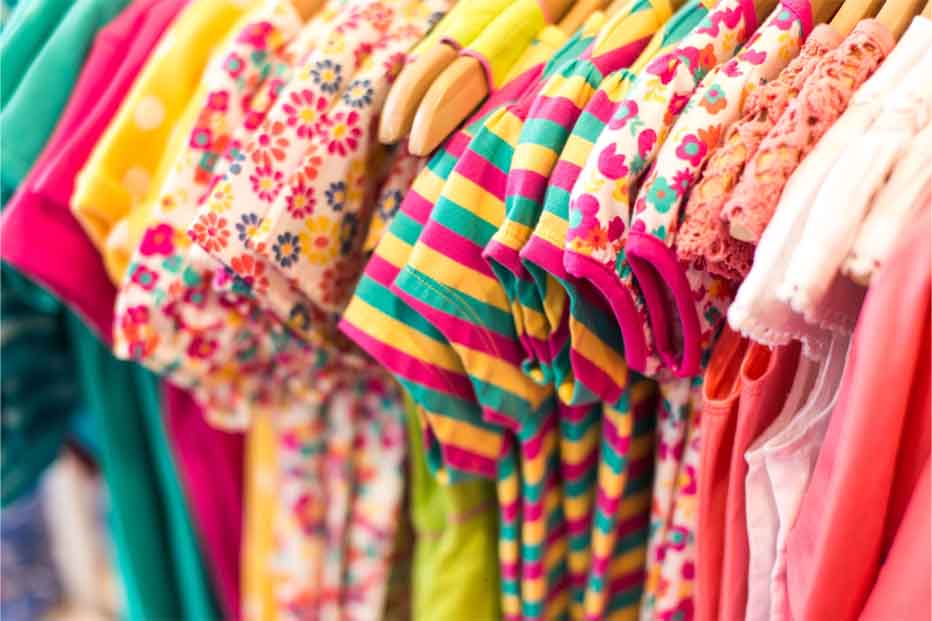
6. Pros and Cons of Starting a Children’s Clothing Business
6.1. Pros Of Starting A Kid’s Clothing Line
- Low Startup Cost: When you are getting starting with a new business, the initial investment has to come from your pockets, so entrepreneurs always look for ideas where the initial investment is low. Starting a kid’s clothing line is a good idea in that regard. Initially, you don’t even need to get an office space or a factory to get started, which can help you save some money. You can also dedicate only as much time as you want initially to help you start this idea off as a side project. All these factors are supportive in helping you make the leap to start your new business.
- High Margins & Scalability: These are golden words for entrepreneurs; having high margins allows you to get the best return on investment (ROI) and scalability allows you to keep multiplying your earnings over time. So, with a children’s clothing line, you can have both. The average margin for a kid’s clothing line is around 47%, according to reports. The scalability of this business is also a given because children are born every day in every part of the world, and it is not expected to stop any time soon. So, congratulations yet again; this is also a great motivation on why you should get your business off the ground.
- Lower Manufacturing Costs & Easier To Sell (Comparatively): Children are small, so the amount of cloth needed to make their clothes is less; this leads to lower manufacturing costs for your products. The lower manufacturing cost allows you to get higher margins, but that’s not all. You can also sell this stuff easier comparatively as parents always want to have plenty of options in terms of clothes for their children, so with a little bit of marketing, you can engage your customers on a tirade of impulse buying.
6.2. Cons Of Starting A Kid’s Clothing Line
- Crowded Market: You are not the first person to go through these pros, and neither is this market brand new. Clothes for children have existed as long as children have existed, so for you to come in and disrupt the industry is going to be an incredible ask of yourself. Realistically, it will take a considerable time before you get a good footing in the market to have a sustainable and profitable business. So, make sure you understand that before you get started.
- Dependency: Unless you start self-manufacturing and selling your products, which is not possible initially, you will be quite dependent on others for the success of your business. Finding the right supplier can be a major pain initially when you don’t know many people from the industry. So, in order to get started, you have to spend a considerable time finding the right people to work with in order for your concern to be successful.
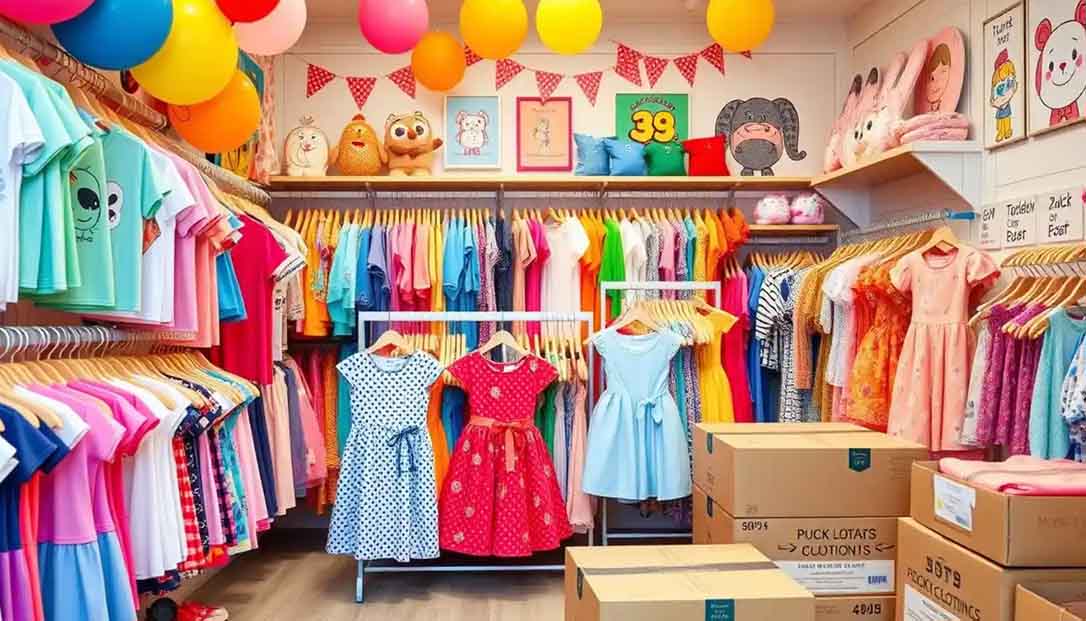
7. Steps to Build a Successful Kidswear Brand
Launching a kidswear label requires thoughtful preparation and execution. Here are key steps to follow:
- Research Your Market: Identify your target audience’s needs, preferences, and shopping behavior to create products that resonate with them.
- Develop a Distinct Brand Identity: Craft a unique brand name, logo, and story that communicate your values and set your brand apart.
- Design and Source Products: Offer trendy, comfortable, and durable clothing for children. Work with trusted manufacturers or suppliers specializing in kidswear.
- Create an Online Presence: Build a user-friendly, mobile-optimized e-commerce website that showcases your collection.
- Grow a Community Online: Use platforms like Instagram, Facebook, and Pinterest to highlight your products, engage with customers, and share inspiring content such as outfit ideas or testimonials.
- Promote Effectively: Implement a strategic marketing plan using influencer collaborations, online ads, SEO, and email campaigns to expand brand visibility.
- Deliver Excellent Service: Provide prompt customer support, easy return policies, and personalized shopping experiences to build trust and repeat business.
- Stay Updated: Keep track of fashion trends and industry changes. Regularly refresh your product line and marketing approach to stay competitive.
By consistently providing top-quality products and exceptional customer service, you can significantly boost your chances of success in the kidswear industry.
Note: Every business carries risks. Success will depend on market dynamics, competition, and execution. Conduct thorough research and seek expert advice before starting a kidswear venture or any business.
8. Strategies for Building a Profitable Childrens Clothing Business
Selling children’s clothes can indeed be a profitable venture for entrepreneurs who are willing to put in the effort and employ effective strategies. The children’s clothing industry is a multi-billion-dollar market that continues to grow, offering numerous opportunities for those looking to tap into this lucrative sector. While it is indeed profitable, it is essential to be aware that like any business, it requires careful planning and execution to succeed.
Here are some essential strategies for building a profitable children’s clothing business:
- Find a Niche: Identifying and targeting a specific niche within the children’s clothing market can provide a competitive edge. Whether it’s organic and eco-friendly clothing, personalized apparel, or a particular age group, specializing in a niche can help set your business apart from the competition.
- Quality and Variety: Offering high-quality and diverse clothing options can attract more customers and foster repeat business. Parents are often willing to invest in well-made and durable clothing for their children, so ensuring that your products meet these standards is crucial.
- Online Presence: In today’s digital age, having a strong online presence is essential for any business. Selling children’s clothes online through an e-commerce platform or a website can significantly expand your reach and customer base. Utilizing social media and digital marketing can also help in driving traffic to your online store.
- Branding and Marketing: Building a strong brand and implementing effective marketing strategies is vital for success. Creating a recognizable brand identity and promoting it through various channels can help in cultivating customer loyalty and attracting new clients.
Selling children’s clothes is indeed a profitable venture that can be rewarding both financially and creatively. By implementing these strategies and staying attuned to market trends and consumer preferences, entrepreneurs can carve out a profitable niche in the children’s clothing industry.
9. 10 Promising Baby & Kidswear Business Ideas for 2026
9.1. Organic Baby Clothing Line
In today’s eco-aware market, organic baby clothing is not just a trend but an essential choice. Parents increasingly prefer organic fabrics to keep their children safe from harmful chemicals. By using organic cotton and other natural fibers, you can build a brand that emphasizes both quality and sustainability.
- Profit Potential: Strong demand for eco-friendly clothing and the ability to price products at a premium.
- How to Begin: Partner with eco-conscious suppliers, source certified organic fabrics, and obtain the proper certifications.
9.2. Customized Baby Apparel
Personalization is highly attractive in the kidswear market. Offering products like onesies, T-shirts, or blankets with a child’s name or special message adds sentimental value, turning them into keepsakes.
- Profit Potential: Personalization provides a unique selling point that sets you apart.
- How to Begin: Invest in high-quality printing or embroidery equipment and provide flexible customization options online.
9.3. Baby Accessories Shop
Beyond clothing, essentials like hats, mittens, and booties are always in demand. These practical yet charming items can complement any outfit and are especially popular as gifts.
- Profit Potential: Low production cost and strong demand for small items.
- How to Begin: Stock popular accessory pieces and sell them online or in-store.
9.4. Seasonal Kidswear
Parents love dressing their children in themed outfits for holidays and special occasions, from Easter bunnies to Halloween costumes. Seasonal collections can be highly profitable if planned well.
- Profit Potential: Time-sensitive products drive quick sales at higher margins.
- How to Begin: Prepare stock months ahead and launch marketing campaigns before each holiday season.
9.5. Baby Boutique
A boutique focused on high-end baby clothing delivers more than clothes-it provides a luxury shopping experience. With exclusive designs, premium fabrics, and personalized service, you can target a clientele willing to spend more.
- Profit Potential: Premium pricing and customer loyalty.
- How to Begin: Choose a high-traffic location and enhance the shopping experience with services like styling advice and elegant gift packaging.
9.6. Kidswear Subscription Boxes
Subscription boxes offer parents curated selections of clothing and accessories each month, creating convenience for them and recurring income for you.
- Profit Potential: Steady monthly revenue and strong customer retention.
- How to Begin: Collaborate with kidswear suppliers and brands to assemble a variety of items for your boxes.
9.7. Gender-Neutral Clothing
With the rise of inclusive fashion, gender-neutral kidswear offers versatile designs free from stereotypes. This approach resonates with modern parents seeking equality and variety.
- Profit Potential: Expands your customer base by meeting growing demand for inclusive clothing.
- How to Begin: Focus on unisex designs and universally appealing colors, and position your brand as inclusive and progressive.
9.8. Themed Kidswear
From superheroes to fairytale characters, themed clothing adds fun and lets children express their personalities. These collections can quickly capture attention and generate buzz.
- Profit Potential: High engagement and viral marketing opportunities.
- How to Begin: Track pop culture trends and create designs inspired by popular themes.
9.9. Online Resale Platform
An online marketplace for gently used kids’ clothes benefits both families and the environment. Parents save money, reduce waste, and gain from a circular economy model.
- Profit Potential: Repeat transactions from both buyers and sellers, with low sourcing costs.
- How to Begin: Build a user-friendly website or app, and implement quality checks for items before resale.
9.10. Baby & Kids’ Footwear
Footwear is essential for children at every stage, from crawling to first steps. A business dedicated to stylish and comfortable kids’ shoes can round out your apparel offerings.
- Profit Potential: Shoes are a necessity, and parents are willing to pay more for comfort and durability.
- How to Begin: Offer a diverse range of sizes and styles tailored to each stage of childhood development.
10. Top 5 POS Systems for Children’s Clothing and Fashion
10.1. Clover
Clover is a POS software developed by Clover Network Inc., designed to provide an all-in-one solution for managing sales and payments for small and medium-sized businesses. It caters to industries such as restaurants, retail, services, and more. For retail SMEs, Clover’s POS pricing is divided into three main packages:
- Starter: $799 + $14.95/month (one-time payment option available) or $60/month (monthly plan). Includes an 8″ merchant-facing POS.
- Standard: $1,799 + $49.95/month (one-time payment option available) or $135/month (monthly plan). Includes a 14″ merchant-facing POS.
- Advanced: $2,398 + $64.90/month (one-time payment option available) or $185/month (monthly plan). Includes both a 14″ merchant-facing POS and a handheld POS.
Pros
- Ease of Use: Intuitive, user-friendly touchscreen interface for quick navigation.
- Customization: Flexible interface that allows businesses to adjust layouts, function buttons, and settings.
- Offline Support: Works offline and automatically syncs data when the internet connection is restored.
Cons
- High Upfront Costs: More expensive than many other POS options, which can be difficult for smaller businesses.
- Invoice Formatting Limits: Limited customization for invoices, which may not meet specific business requirements (e.g., adding liquor taxes or stamps).
- Dependent on Clover Ecosystem: Best suited within Clover’s ecosystem, with limited integration into other systems like CRM or ERP.
10.2. Korona POS
Korona POS, developed by KORONA, is a retail system designed to help small and medium-sized businesses with sales, payments, and inventory management.
Pricing plans include:
- Core: $59/month – Ideal for small businesses with a single store.
- Advanced: $69/month – Suitable for SMEs with one store and inventory tracking.
- Plus: $89/month – Best for SMEs managing multiple stores.
- Enterprise: Custom pricing for businesses requiring tailored solutions.
Pros
- User-Friendly Interface: Easy to use, even for staff new to POS systems.
- Regular Updates: Frequent feature updates and fixes without interrupting daily operations.
- Cross-Platform: Compatible with desktops, tablets, laptops, and smartphones.
Cons
- Internet Dependency: Requires a stable internet connection to operate.
- Vendor Reliance: Dependence on KORONA for maintenance and upgrades.
- Migration Challenges: Switching from another POS system to KORONA may be complex and resource-intensive.
10.3. KiotViet
KiotViet is a POS and business management system tailored for retail stores and restaurants. It covers payments, inventory, customer management, orders, delivery, reports, and analytics.
Pricing plans:
- Support: 200,000 VND/month per store – For small businesses, startups, or online shops.
- Professional: 270,000 VND/month per store – For professional operations.
- Premium: 370,000 VND/month per store – For businesses with multiple sales channels.
Pros
- User-Friendly: Simple interface with localized support for Vietnamese users.
- Seamless Integration: Connects with printers, barcode scanners, payment devices, and other management systems.
- Strong Inventory Management: Simplifies product updates and stock tracking.
Cons
- License Fees: Ongoing monthly or yearly fees can be a challenge for small businesses.
- Limited Customization: Advanced customization options are restricted.
- Niche Limitations: Primarily designed for retail and F&B, less suited to industries like electronics or agriculture.
10.4. VNPAY-POS
Developed by VNPAY, VNPAY-POS is an all-in-one POS solution designed to manage sales and payments in a single device.
Pricing options:
- Free usage if monthly payment fees exceed 275,000 VND. Otherwise, 275,000 VND/month per device.
- Device rental for 165,000 VND/month, free if transactions exceed 30,000,000 VND/month per device.
Pros
- Multiple Payment Options: Accepts e-wallets, bank cards, QR codes, and transfers.
- Added Benefits: 0% installment support, cross-selling services, and 24/7 support.
- Comprehensive Functions: Beyond payments, it supports menus, ordering, printing, sales tracking, and reporting.
Cons
- Recurring Costs: Ongoing monthly fees and transaction charges can add up.
- Feature Gaps: Fewer customization features compared to other POS systems.
- Hardware Restrictions: Requires specific VNPAY-supported devices, adding to initial costs.
10.5. POS365
POS365, developed by 365 Technology Corporation, is a cloud-based POS system serving retail, restaurants, cafés, and related businesses.
Pricing options:
- Basic: 1,650,000 VND/year – Entry-level plan.
- Popular: 3,300,000 VND for 2 years + 1 year free – For SMEs.
- Lifetime: 6,600,000 VND one-time payment – For established businesses.
Pros:
- Tailored for Vietnam: User-friendly interface designed for local business needs.
- Comprehensive Features: Includes sales, inventory, order, staff, customer, and reporting tools.
- Multi-Branch Management: Easily manage multiple outlets from a single system.
Cons:
- Customization Limits: May not meet unique or highly specific business needs.
- Internet Dependent: Requires stable internet for uninterrupted use.
- Security Risks: As an online system, more vulnerable to cyber threats without proper safeguards.
11. Best children’s clothing brands superstores industry
Below issbest children’s clothing brands in the supermarket industry you should know:
11.1. Appareify – Versatile Supplier for Quality Children’s Clothing
Appareify is a large-scale manufacturing company that produces a wide variety of garments, including T-shirts, swimwear, hoodies, lingerie, kidswear, activewear, leggings, and underwear. With a monthly output of around 400,000 pieces, the company demonstrates its strong production capacity.
Although Appareify doesn’t focus exclusively on children’s apparel, it still offers a diverse collection for toddlers, children, and teenagers, using a wide range of fabrics suitable for different occasions.
The company provides multiple cooperation models such as CMT (Cut, Make, Trim), FOB (Free on Board), and ODM (Original Design Manufacturer). These flexible options allow businesses to tailor partnerships based on their specific needs.
In addition, Appareify emphasizes sustainability by adopting eco-friendly manufacturing practices, ensuring that quality production goes hand-in-hand with ethical responsibility. Businesses interested in exploring their products can sign up for membership to access their full catalog.
Pros
- Wide variety of garment types
- Flexible cooperation models for different needs
- Commitment to sustainable and ethical practices
Cons
- Delivery times may be longer
- Not exclusively focused on children’s apparel
11.2. AEL Apparel – Eco-Conscious Partner for Custom Children’s Clothing
AEL Apparel is another trusted manufacturer offering customizable clothing for both children and adults. Like Appareify, they prioritize sustainability, producing eco-friendly garments that reduce waste and minimize environmental impact.
They stand out for their competitive turnaround times and low MOQs (Minimum Order Quantities), making them an appealing choice for small and medium-sized businesses aiming to launch or expand their collections.
AEL Apparel provides services such as cut-and-sew, OEM (Original Equipment Manufacturing), and private labeling. They support the creation of apparel for all age groups, from newborns to adults, and their fashion team can assist with developing custom designs to help brands build unique collections.
Pros
- Strong focus on sustainability and eco-friendly production
- Low MOQs suitable for businesses of all sizes
- Wide range of custom clothing options
Cons
- No ready-made stock available
- Factory inspections may be challenging for overseas clients
11.3. Penguin Kids Wear – Experienced Children’s Clothing Supplier
Penguin Kids Wear (PKW Group), established in the 1990s, has decades of experience in manufacturing children’s clothing and accessories for global retailers. They are well-regarded for their excellent customer service, which helps build strong supplier-retailer relationships and makes accessing their catalog seamless.
Unlike some competitors, PKW Group specializes solely in children’s apparel and accessories, offering a wide product range. Their catalog includes everyday essentials like jeans and T-shirts as well as formalwear such as dresses and suits for special occasions.
Membership is required to fully access their product lines, but their reliable customer support makes the process simple.
Pros
- Over 20 years of experience in children’s clothing
- Dedicated customer service team
- Membership provides access to a broad product catalog
Cons
- Membership required for full access
- Limited transparency on sustainability practices
11.4. Kiddies World – U.K.’s Leading Supplier for Comfortable, High-Quality Children’s Clothing
Kiddies World is a well-established children’s wear supplier based in the United Kingdom, operating since 1992. They provide a wide selection of well-known children’s clothing brands, with fabrics chosen for their softness and comfort, paired with designs that highlight attention to detail. This makes them an excellent choice for retailers aiming to offer children’s clothing with unique character. Kiddies World also collaborates with businesses to create custom designs.
While specializing in garments for babies and young children, they also supply additional items such as socks and shawls for different age groups. Their service system is recognized as efficient, professional, and comprehensive, supporting global distribution.
Pros:
- Decades of industry experience
- Emphasis on comfort and fabric quality
- Reliable and efficient service system
Cons:
- Focused mainly on very young children’s clothing
- No clear sustainability initiatives
11.5. Kelli’s Gift – Global Supplier of Trendy Wholesale Children’s Clothing
Kelli’s Gift is a leading worldwide supplier of children’s apparel, known for its frequently updated collections that provide retailers with fresh, stylish, and creative options. In addition to clothing, they also produce a variety of children’s gifts.
Their range includes sleepsuits, rompers, and dresses for kids across different age groups. Kelli’s Gift also runs special promotions and seasonal campaigns, offering retailers opportunities to save on bulk orders for specific events or holidays.
They cater to both large and small retailers by offering bulk purchase discounts as well as smaller quantity options, making them a versatile choice for businesses of different sizes.
Pros:
- Continuously refreshed product selection
- Discounts and promotions for bulk orders
- Wide variety of children’s apparel
Cons:
- Limited transparency on manufacturing practices
- No sustainability information provided
11.6. HoneyDew – Affordable and Fast-Shipping Children’s Clothing Wholesaler
HoneyDew is a U.S.-based children’s clothing wholesaler known for offering stylish garments at budget-friendly prices. Their product line includes dresses, sleepwear, Halloween costumes, rompers, bubble sets, and Jonjon sets.
They have built a reputation for balancing quality and affordability, making them an attractive option for smaller retailers with tighter budgets. A standout feature is their quick shipping service — same-day processing for orders placed before a certain cutoff time (bulk orders may take up to two days).
Pros:
- Same-day shipping for most orders
- Affordable pricing with good quality
- Wide selection of children’s items, including rompers and bubble sets
Cons:
- Bulk orders require up to two days for processing
- Limited details on international shipping
11.7. K-Embroidery – Hand-Embroidered Children’s Clothing Manufacturer
K-Embroidery is a manufacturer specializing in hand-embroidered children’s clothing and hand-embroidered products since 1996, headquartered in Hanoi and a factory in Hai Duong, Vietnam. The company exports high-end fashion items for babies and children such as dresses, jumpsuits, rompers, as well as accessories such as towels, tablecloths and small handbags.
Strengths:
- High quality and international standards: The factory is ISO 9001:2015 certified, products meet OEKO-TEX® 100 standards, and owns certifications such as ISO 13485 & CE Marketing, ensuring quality and social responsibility.
- Long experience and craftsmanship: With over 25 years in the hand-embroidered industry, K-Embroidery is famous for its exquisite hand-embroidered techniques and unique designs.
- Competitive Prices / Low MOQ: The company offers prices about 5–15% lower than the market average, with low minimum order quantities (only 30 pieces), suitable for both small and large wholesalers.
Contact K-Embroidery manager to buy high quality, cute and safe hand-sewn products for children via WhatsApp: +84855555961 to get the best price and order now!
Contact:
- Address: 5th Floor, Building No. 169 Nguyen Ngoc Vu, Cau Giay District, Hanoi
- Hotline: +84855555961
- Website: https://k-embroidery.com/
- WhatsApp: +84855555961


